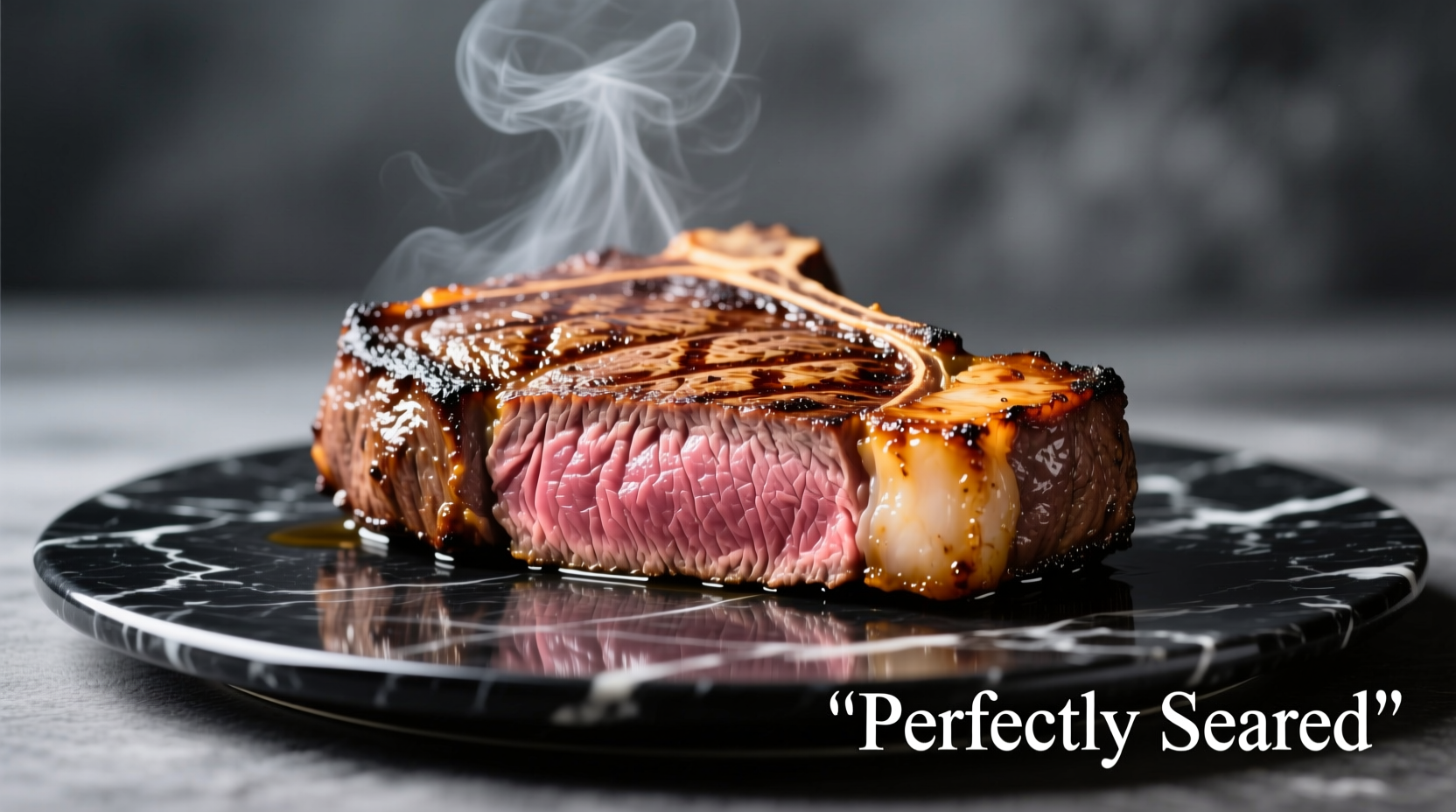Mastering how to cook filet mignon on the stovetop transforms an expensive cut of beef into a restaurant-quality meal in under 20 minutes. This method eliminates the need for grilling or oven finishing while delivering that perfect sear and melt-in-your-mouth tenderness filet mignon deserves. Unlike complicated techniques that require special equipment, this straightforward approach works with basic kitchen tools and delivers consistent results.
Why Stovetop Cooking Works Best for Filet Mignon
Filet mignon's delicate texture and mild flavor make it particularly suited to stovetop cooking. The American Meat Science Association confirms that controlled high-heat searing develops maximum flavor through the Maillard reaction while preserving the steak's signature tenderness. Unlike thicker cuts that require oven finishing, filet mignon's smaller diameter (typically 1-1.5 inches thick) allows for complete cooking with just a skillet.
Essential Equipment Checklist
Before you start cooking filet mignon on the stovetop, gather these critical tools:
- Cast iron or heavy-bottomed stainless steel skillet (avoid non-stick)
- Instant-read thermometer (Thermapen recommended)
- Tongs (no piercing forks)
- Heat-resistant spatula
- Metal pan for resting
| Equipment | Why It Matters | Affordable Alternative |
|---|---|---|
| Cast iron skillet | Holds consistent high heat for perfect sear | Carbon steel pan |
| Instant-read thermometer | Prevents overcooking expensive steak | Digital probe thermometer |
| Copper-core saucepan | For butter basting without hot spots | Stainless steel pot |
Selecting the Perfect Filet Mignon
Not all filet mignon cuts work equally well for stovetop filet mignon cooking. Choose center-cut portions 1-1.5 inches thick with even marbling. The USDA Food Safety and Inspection Service recommends looking for bright cherry-red color and firm texture. Avoid excessively thick cuts (over 2 inches) that would require oven finishing for proper doneness.
Step-by-Step Cooking Process
Preparation (15-30 Minutes Before Cooking)
- Remove steak from refrigerator 30 minutes before cooking
- Pat completely dry with paper towels (critical for sear)
- Season generously with coarse salt and freshly ground pepper
- Optional: Add 1-2 minced garlic cloves and fresh thyme sprigs
Searing Process (The Critical Phase)
Temperature control makes or breaks your filet mignon stovetop recipe. Follow these precise steps:
- Heat cast iron skillet over medium-high until water droplets sizzle violently (400-450°F)
- Add 1 tbsp high-smoke point oil (avocado or grapeseed)
- Place steak in skillet away from you to prevent oil splatter
- Sear undisturbed for 3-4 minutes until deep brown crust forms
- Flip and sear second side for 3-4 minutes
- Turn edges briefly to render fat cap (if present)

Finishing and Resting
- Reduce heat to medium, add 2 tbsp butter, 2 garlic cloves, and fresh herbs
- Tilt pan and spoon melted butter over steak for 60-90 seconds
- Remove steak when thermometer reads 5°F below target doneness
- Transfer to warm metal pan (not plate) for 5-10 minute rest
According to the Culinary Institute of America's professional cooking guidelines, resting allows juices to redistribute without continuing to cook the meat. The internal temperature will rise 5°F during this critical phase.
Perfect Doneness Guide
| Doneness | Final Internal Temp | Stovetop Time (1.5" thick) | Visual Cues |
|---|---|---|---|
| Rare | 120-125°F | 5-6 minutes total | Bright red center, very soft |
| Medium-rare | 130-135°F | 6-7 minutes total | Warm red center, tender |
| Medium | 140-145°F | 7-8 minutes total | Pink center, slightly firm |
Troubleshooting Common Problems
Problem: Steak sticking to the pan
Solution: Ensure proper preheating and dry surface. The American Council on Science and Health notes that protein bonds release naturally once the Maillard reaction completes (about 90 seconds into cooking). Wait patiently before attempting to move the steak.
Problem: Uneven cooking
Solution: Use tongs to press thinner edges against the hot surface for 10-15 seconds during searing. Professional chefs call this "kissing" the thinner portions to ensure even temperature distribution.
Problem: Burnt exterior, raw interior
Solution: Lower heat immediately and finish in 300°F oven if necessary. For future attempts, start with a slightly cooler pan (375°F) and extend cooking time by 30-60 seconds per side.
Pro Tips for Restaurant-Quality Results
- Dry brine overnight: Salt steak 24 hours before cooking for deeper seasoning and improved texture
- Butter basting: Use clarified butter to prevent burning during extended basting
- Temperature monitoring: Insert thermometer horizontally from the side for most accurate reading
- Resting technique: Tent loosely with foil to maintain warmth without steaming the crust
Why This Method Beats Other Cooking Techniques
While grilling and sous vide have their merits, stovetop cooking filet mignon delivers unmatched crust development in minimal time. Food science research from the University of California Davis shows that cast iron's thermal retention creates superior Maillard reaction conditions compared to other methods. The direct contact with hot metal develops complex flavor compounds that radiant heat methods cannot replicate.
Common Mistakes to Avoid
- Moving steak too soon (prevents proper sear formation)
- Overcrowding the pan (lowers temperature dramatically)
- Using wet meat (causes steaming instead of searing)
- Skipping the rest period (results in juice loss when cut)
- Guessing doneness (always use thermometer for expensive cuts)











 浙公网安备
33010002000092号
浙公网安备
33010002000092号 浙B2-20120091-4
浙B2-20120091-4